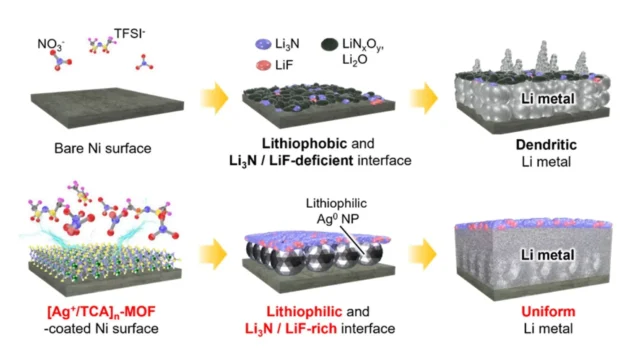A team from the Department of Chemical and Biomolecular Engineering at Korea University have presented the development of lithium metal batteries with a silver ion-based coating technology that improves the stability and lifetime of the electrodes.
Safety of lithium batteries
The initiative, led by Professor Jinhan Cho, employs a layer-by-layer method using coordination bonds to deposit silver ions and trithiocyanuric acid(TCA) on a fibrous nickel electrode. The result is an ultra-thin metal-organic framework(MOF) of less than 40 nanometers that operates without the need for heat or nanoparticle synthesis.
During battery operation, silver ions are converted into nanoparticles that regulate lithium accumulation and suppress dendrite formation. At the same time, the TCA forms a protective film that reduces electrode deterioration with prolonged use of the technology.
Tests revealed that the new anodes allow the batteries to operate stably for more than 2000 hours. Even in configurations with conventional anodes, more than 96 % of the original capacity was maintained after 1300 charge and discharge cycles, as a measurement technique.
It is a discovery that could drive the commercialization of high energy density batteriesThe technology innovation stands out for achieving this without relying on complex industrial processes, which could facilitate large-scale accessibility in today’s market. The technological innovation stands out for achieving this without relying on complex industrial processes, which could facilitate large-scale accessibility in today’s market.
Professor Cho demonstrates that this technology based solely on silver ions could be extended to batteries made of other metals, such as sodium or zinc. His development was also funded by the National Research Foundation of Korea and his results were published in the journal Advanced Materialsbeing selected as a cover article for its relevance in the field of energy storage.
Source and photo: Korea University

